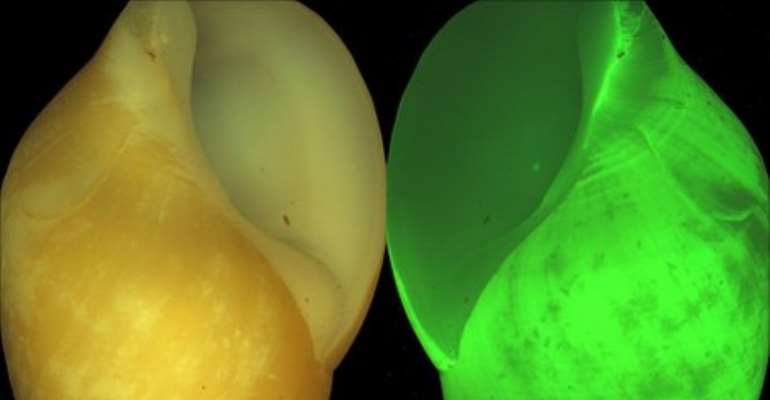SNAILS FLASH A GREEN ALARM LIGHT

A humble marine snail has a unique luminescent shell that brightens its glow, say scientists.
The snail, Hinea brasiliana , produces flashes of green light, which scare away predators.
Its tiny “bioluminescent” body part is lodged permanently within its shell, but the shell amplifies the light, and the faint glow it produces illuminates the whole shell surface.
The findings are published in the Royal Society journal Proceedings B.
Dr Dimitri Deheyn from the Scripps Institution of Oceanography in San Diego, US, led the study.
He specialises in the study of bioluminescent organisms – living things that produce their own light.
It could be the snail's way of saying, 'hey – eat that guy – he's attacking me'
Dimitri Deheyn
Scripps Institution of Oceanography
Dr Deheyn has worked on glowing snails before, but he was intrigued by this one because, when it retracted into its opaque, yellow shell to avoid a predator, it still glowed.
“The shell actually amplifies the light – making the light source appear much bigger,” he told BBC News.
Examining the bright little creature further, the research team discovered that its shell was a far more effective “light diffuser” than the best commercially available product.
“It's also colour-specific,” Dr Deheyn explained. “If you shine red light through it, it doesn't work; if you shine blue light it doesn't work.
“It only works for blue-green light that the snail produces.”
The team now plans to study the shell in detail, to find out how it works and possibly copy its specialised light-amplifying structure.
Double defence
As well as scaring the predator away, the scientists also think the flashy snail's bioluminescence may act as a second line of defence.
http://www.bbc.co.uk/nature/adaptations/Bioluminescence
The flashes puts “the spotlight” on a persistent predators, such as a crab. This means that the creatures that prey on the crab can see it more easily.
This is a known concept in biology, called the burglar alarm hypothesis.
Dr Deheyn said: “It could be the snail's way of saying, 'hey – eat that guy – he's attacking me'.”
